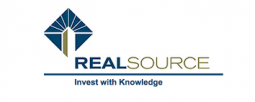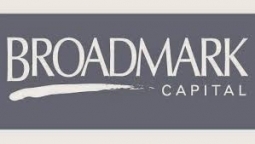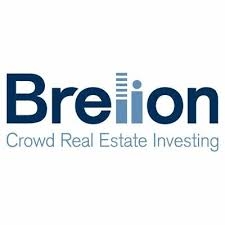ROI vs IRR: How to Calculate and Which is Better?
Brandon Hall
Return on Investment and Internal Rate of Return are two common metrics utilized for evaluating investments. We will look at each of these metrics independently below, showing you the difference between IRR and ROI.
Return on Investment
The Return-on-Investment metric is closely related to the Equity Multiple metric. Both metrics are comparing the total return to the investment amount irrespective of investment duration. Return on Investment is calculated by subtracting the investment amount from the total distributions and dividing the result by the investment amount. The Return-on-Investment metric is not difficult to calculate as it’s a straightforward way to calculate cash flows and is often published as a percentage increase or decrease.
(Total Distributions – Investment Amount) / Investment Amount = Return on Investment
A positive ROI indicates a profitable net cash investment while a negative ROI indicates a money losing investment. If the ROI = 0%, the investment is break-even. An example of a positive and negative ROI are shown below in Example 1 and 2 respectively.
Example 1:
An investor makes an initial investment of $1,000. They receive $200 in cash dividends over the life of the investment and a final lump sum disbursement of $1,300. The Return on Investment is 50% calculated using the following formula:
[(($1,300+$200)-$1,000)/$1,000 = 50%
Example 2:
An investor takes an amount invested of $1,000. They receive $200 in cash dividends over the life of the investment which are reinvested. The final lump sum disbursement is $900. The Return on Investment is -8.3 % calculated using the following formula:
[(($900+$200)-($1,000+$200))/$1,200 = -8.3%
Internal Rate of Return
The Internal Rate of Return (IRR) is a commonly used cash flow analysis metric but is more difficult to both comprehend and calculate. Detailed explanations of how to calculate IRR and the relationship between IRR, Net present value, discount rate, and other factors like annual growth frate are widely available across the internet. The explanation here is intended to be a more practical explanation of what the internal rate of return is and pitfalls of using only IRR to evaluate an investment.
All else being equal, a higher IRR is better for an investor and represents positive cash flows, but very rarely is “all else equal” when comparing investments.
In simple terms, the internal rate of return is the rate of return of an investment for each period of time it is invested. This provides a way to measure the time value of money, especially the future value of money. IRR explanations start with a simple example to illustrate this concept of time value of money: A $1,000 investment has no dividend payment, but after 6 years is sold for $1,974. The IRR is calculated at 12% above present value using the XIRR function in Microsoft Excel, and the cash flow is shown in Table 1.
Table 1
We know the IRR is telling us the future expected value of the $1,000 initial amount invested. Table 2 breaks out the incremental steps that take the investment from $1,000 to $1,974 assuming an IRR (and an annual growth rate) of 12%.
Table 2
This is a straightforward example with no payments between the initial investment made and the final disbursement. Many investments, especially real estate investments, will have periodic payments and the cash flows may look more similar to that shown in Table 3. The IRR is calculated in a similar fashion as to above. For those looking for a more detailed explanation of the IRR break out calculations for the investment in Table 3 please see Appendix A.
Table 3
There are a few caveats to be aware of when using IRR to compare investment opportunities. As IRR is heavily dependent on payout timing, investments of short duration can have a high IRR, but the total return may be low. For example, a $1,000 investment which disburses $1,002 the next day would have an IRR of 107%! If an investor were to only look at IRR alone this may seem like an attractive opportunity, however, a shrewd investor who also calculates equity multiple would note the paltry 1.002 EM ratio for this opportunity and realize that this is of little use to most investors.
Table 4
In a more realistic scenario, we see the impact of payment timing on the IRR. The next three tables show an identical $1,000 investment with $500 in dividends paid out and a final disbursement of $1,100.
Table 5 shows an investment with regular $100 per year dividends for 5 years before the final disbursement. The IRR is 10%. Table 6 shows an accelerated payment of $500 in dividends in year 1, no dividends in years 2-6 for an IRR of 12.1%. Table 7 shows a back-loaded payment schedule: no dividends in years 1-4, a $500 dividend in year 5 followed by the same final disbursement with an IRR of 8.6%. Note that the equity multiple in all of these scenarios is 1.6, but the IRR varies from 8.6% to 12.1%.
Table 5
Table 6
Table 7
A final word on IRR and Equity Multiple: Both IRR and equity multiple provide important insight into an investment opportunity but neither can be viewed in isolation. When evaluated together the investor will understand both the total return and a time-weighted return of their funds, laying clear the overall performance of an investment.
Appendix A
The periodic distributions from the investment in Table 3 add a layer of complexity in understanding the IRR explanation of time value of money. If we break down the IRR calculation into a year-by-year format as shown in Table 8, the picture becomes clearer. The investor starts with a capital balance (e.g. their initial amount invested) which will be multiplied by the IRR to give the Return on Investment for the year.
IRR * Return on Investment = Capital balance
Any dividend paid that year will first be subtracted from the calculated annual expected returns on an investment. Any dividend in excess of the end of the investment period (an annual return for a given year) will be subtracted from the capital balance.
Cashflow from investment – Return on Investment = Capital Balance Reduction
A dividend higher than the Return on Investment has the effect of lowering the starting balance the following year and thus lowering the return on investment that year. This is shown below in Table 8:
Table 3(re-print)
Table 8
Note that this example shows constant periodic payments, but the math will be the same for fluctuating dividends or investments which require future contributions. Table 9 and 10 show an initial amount invested with both dividend payouts and a second investment in year 3.
Table 9
Table 10

_main.jpg)








